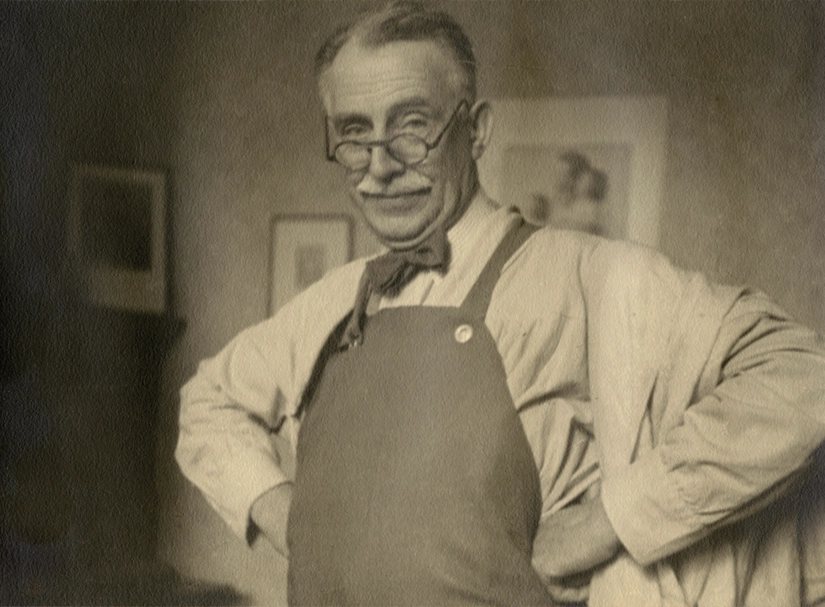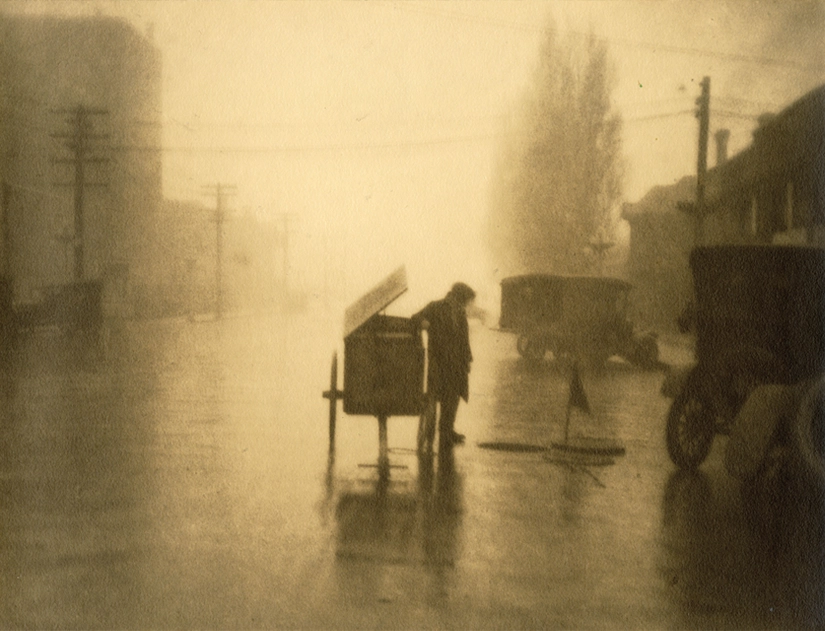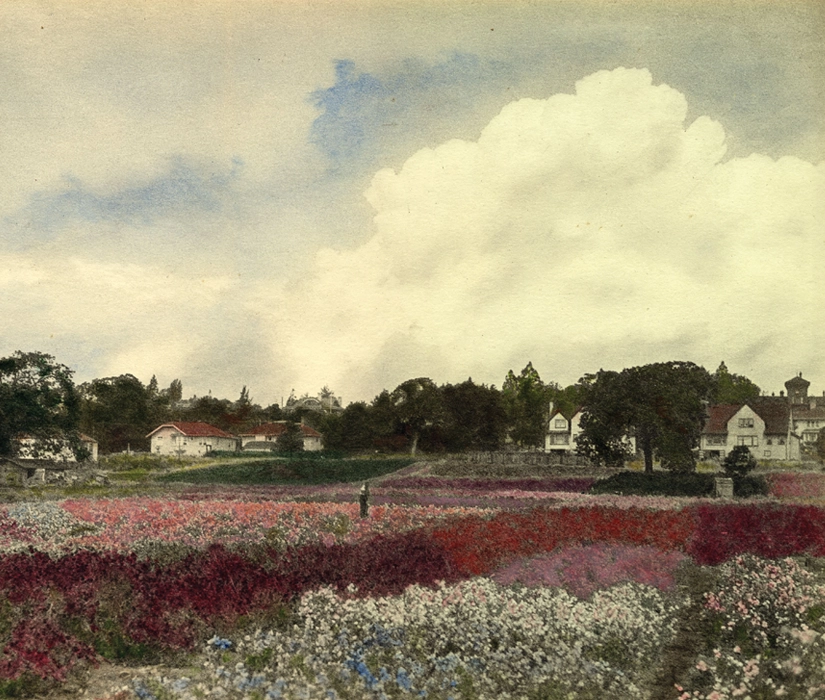The Architectural Photography of Harry Upperton Knight
– opening February 27th –
Harry Upperton Knight (1873-1973) was one of Victoria’s most celebrated and prolific early twentieth century photographers. From the years following World War One to the transformations of the post-World War Two era, he recorded the city and its inhabitants over a period of almost five decades. This exhibit focuses on a remarkable selection of Knight’s architectural photography depicting some of Victoria’s buildings and the people who lived with them.

Knight in his studio, c1940s. (City of Victoria Archives)
Knight’s Victoria
Born and trained as a photographer in England, Knight emigrated to Canada in 1910 where he eventually set up a studio in Victoria in 1917. For much of the twentieth century his name was synonymous with his craft as he photographed many of the Victoria’s residents in his studio, at their homes, and throughout the city’s streets and buildings.
Pictorialist Photography
As a participant in the early photographic movement known as pictorialism, much of Knight’s work explored the potential of the photograph as a vehicle for personal expression. Employing a wide variety of techniques such as soft focus and the use of negative space to achieve this, their goal was to help their viewers to feel as well as to see something. In this way pictorialist photographers sought to expand the medium from one that simply recorded the world, to a fine art that made a statement about it.

“November Morning on Blanshard Street” by H.U. Knight (City of Victoria Archives)

